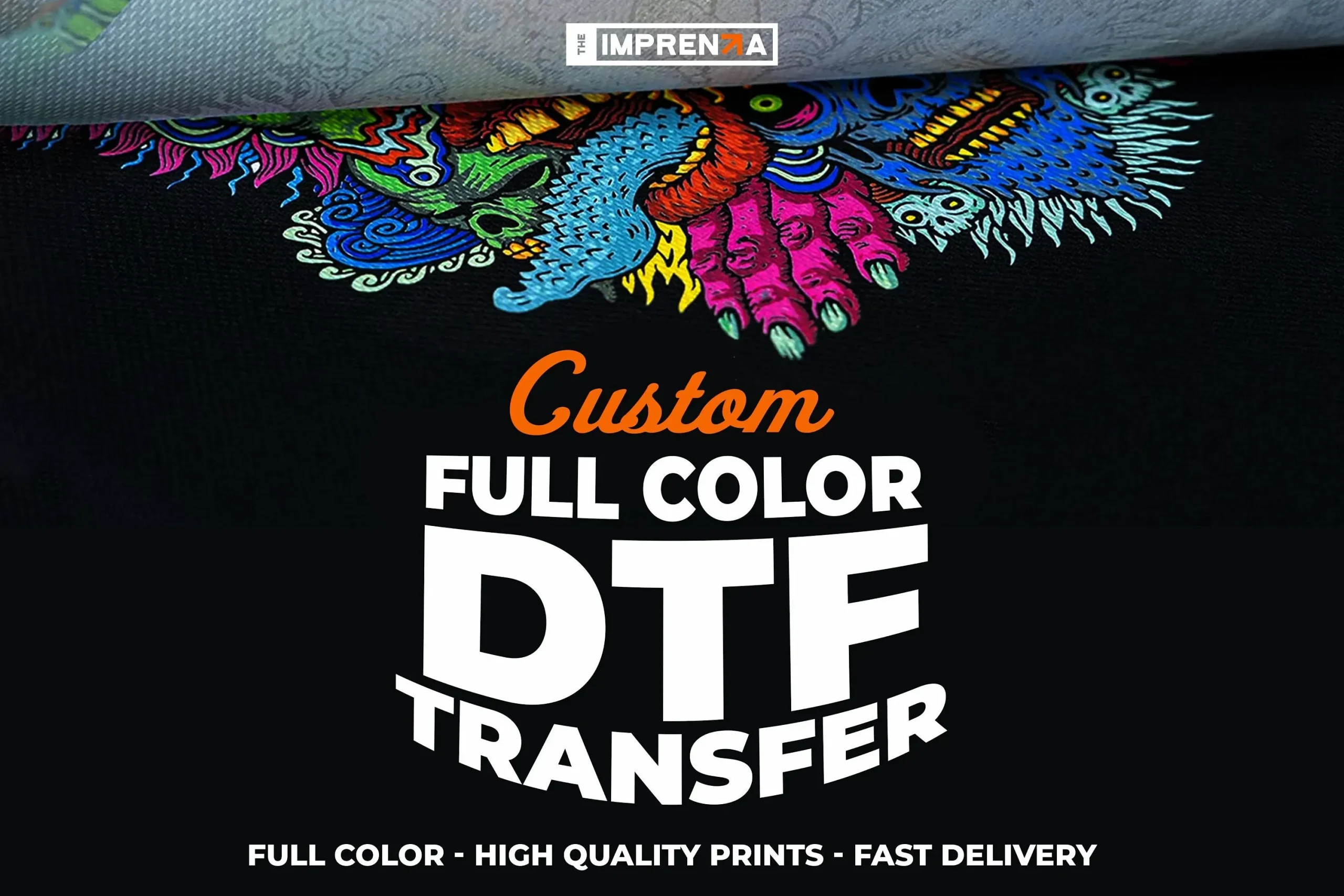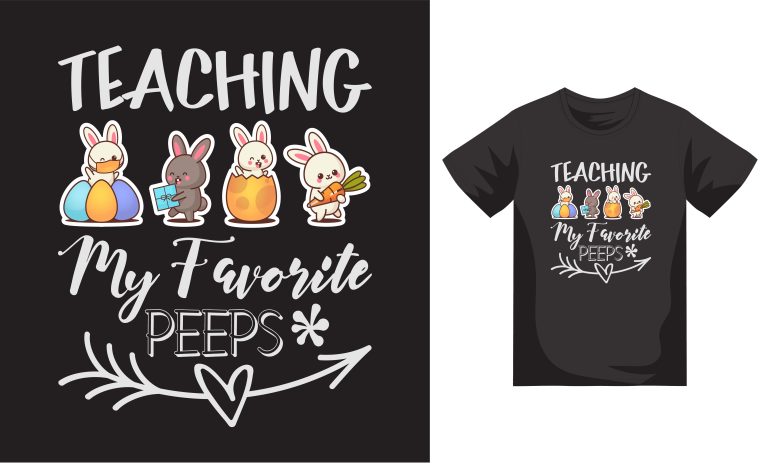
DTF transfers, or Direct to Film transfers, represent a groundbreaking advancement in the world of custom apparel printing. This innovative DTF printing technology enables vibrant designs to be seamlessly applied to a wide variety of fabrics, making it a preferred choice for businesses focused on quality and sustainability. For companies looking for cost-effective apparel solutions, DTF transfers not only minimize production costs but also enhance efficiency, allowing for rapid fulfillment of on-demand orders. As the demand for unique and personalized clothing continues to grow, understanding the advantages of DTF transfers becomes essential for anyone in the textile industry. In this article, we will explore ten fascinating aspects of DTF printing, highlighting its role in revolutionizing the custom apparel sector.
Direct to Film printing, often referred to simply as DTF, has ushered in a new era for custom clothing design, providing an accessible yet advanced option for businesses and artisans alike. Utilizing state-of-the-art printing methods, this technique allows for high-quality graphics to be transferred onto diverse textile materials with impressive durability and brilliance. Many are embracing this novel approach of custom apparel printing due to its alignment with sustainable printing methods, which appeal to environmentally conscious consumers. Furthermore, DTF printing offers cost-effective apparel solutions, ideal for smaller operations looking to make their mark in a competitive market. As we delve deeper into the characteristics and benefits of this technology, you’ll discover why DTF transfers are becoming the go-to choice for personalized fashion.
Understanding the Basics of DTF Transfers
DTF (Direct to Film) transfers represent an innovative approach to custom apparel printing that leverages a unique technology to achieve stunning results. By printing designs onto a specialized film, transfers can be applied to almost any fabric using heat. This method allows for vibrant colors and intricate designs that often surpass traditional printing techniques in quality and durability. As the apparel industry evolves, understanding how DTF transfers work will provide both businesses and hobbyists with new avenues for creativity in custom designs.
Moreover, the efficacy of DTF printing lies in its adaptability across various fabrics, which means it is suitable for use on everything from cotton to polyester. This diversity greatly enhances the appeal of DTF transfers within the custom apparel market, as it aligns with consumers’ desires for personalized products. In this ever-competitive space, mastering the basics of DTF printing technology is crucial for anyone looking to tap into the burgeoning trend of custom clothing.
The Cost-Effectiveness of DTF Printing Technology
Cost-effectiveness is a significant advantage that DTF printing offers, particularly for small to medium-sized businesses. Compared to traditional methods like screen printing, which often involve extensive setup costs and batch orders, DTF transfers require minimal investment in resources and time. This efficiency allows businesses to offer custom apparel solutions that cater specifically to individual customer needs without incurring substantial overhead costs.
With DTF printing, brands can produce limited runs and on-demand orders more sustainably, which is particularly appealing in today’s market where personalization and rapid fulfillment are key. As a result, entrepreneurs can focus on growing their business confidently, knowing that they are leveraging a printing method that supports both quality and budgetary constraints.
Durability and Quality of DTF Transfers
One of the hallmark features of DTF transfers is their remarkable durability. Prints achieve exceptional longevity, consistently maintaining their vibrancy and clarity over time, even after multiple washes. This quality is critical for businesses wanting to deliver high-value products to their customers, as it minimizes returns and enhances customer satisfaction.
DTF printing technology not only provides stunning visuals but also integrates well with sustainable printing methods, showcasing the potential for long-lasting apparel solutions without compromising environmental integrity. As consumers become increasingly discerning about the quality and lifespan of their purchases, the reliable performance of DTF transfers positions them as a superior choice in the realm of custom apparel.
The Versatility of DTF Transfers Across Fabrics
DTF printing technology excels in its versatility, enabling custom designs to be applied to a wide variety of fabric types. This adaptability makes it possible for businesses to cater to a diverse range of customer preferences, from athletic wear made of polyester to cozy cotton apparel. Whether for fashion-forward designs or promotional items, DTF transfers can meet the demands of different applications.
As consumer trends continue to shift toward more personalized and diverse options in apparel, the capability of DTF transfers to seamlessly apply to various substrates becomes a significant advantage. By leveraging this technology, businesses can attract a broader clientele, satisfying the growing desire for unique and tailored apparel among fashion enthusiasts and casual shoppers alike.
Sustainable Practices with DTF Inks
In recent years, the apparel industry has seen a surge in demand for sustainable practices, and DTF printing is stepping up to the challenge. Many companies are developing eco-friendly DTF inks that reduce environmental impact while still delivering high quality and durability. This innovation aligns with the growing consumer preference for green products, positioning brands that adopt sustainable printing methods favorably in the marketplace.
As businesses increasingly turn towards sustainable options, the integration of eco-friendly practices within the DTF printing landscape becomes not just a selling point but a necessity. By embracing these advancements, companies not only enhance their brand image but also contribute positively to environmental conservation, creating a win-win situation for both businesses and consumers.
Integrating DTF Printing with E-Commerce Platforms
E-commerce integration is a game changer for businesses utilizing DTF printing technology. The seamless connection between DTF transfers and online platforms empowers businesses to offer a wide range of customizable apparel options without the burden of maintaining a large inventory. This flexibility attracts consumers who prefer personalized products, thus increasing sales opportunities.
Furthermore, as consumer spending continues to shift towards online shopping, DTF printing technology provides a quick and efficient means of fulfilling custom orders. By offering on-demand printing that aligns with e-commerce solutions, businesses can respond to customer preferences almost instantaneously, establishing themselves as modern and responsive players in the custom apparel market.
Frequently Asked Questions
What are DTF transfers and how do they work?
DTF transfers, or Direct to Film transfers, involve printing designs onto a special film that can then be applied to various fabrics using heat. This DTF printing technology allows for vibrant, high-quality custom apparel printing on different materials, making it a versatile option for many businesses.
Why are DTF transfers considered a cost-effective solution for custom apparel?
DTF transfers are recognized as a cost-effective apparel solution because they require less setup time and resources compared to traditional printing methods like screen printing. This efficiency makes DTF printing ideal for small to mid-sized businesses, particularly for short runs and on-demand orders.
How durable are prints made with DTF transfers?
DTF transfers offer impressive durability, with prints retaining their vibrancy and clarity through multiple washes. This high durability makes DTF printing technology a reliable option for custom apparel, ensuring that designs remain intact even with everyday wear.
What types of fabrics can be used with DTF printing technology?
DTF printing technology is highly versatile and can be applied to a wide range of fabrics, including cotton, polyester, and mixed materials. This adaptability broadens the potential for custom designs, catering to a diverse customer base in the custom apparel market.
Are DTF transfers environmentally friendly and sustainable?
Many DTF inks are being developed with eco-friendly options, aligning with the growing demand for sustainable printing methods. By choosing eco-friendly DTF options, businesses can improve their brand image and attract environmentally conscious consumers in the custom apparel industry.
What are the advantages of using DTF transfers for e-commerce businesses?
DTF printing integrates seamlessly with e-commerce platforms, allowing businesses to offer extensive customization options with minimal upfront inventory. This flexibility enables faster fulfillment times, making it an attractive solution for consumers who seek personalized items in the custom apparel market.
| Key Features | Details |
|---|---|
| Cost-Effective Method | Minimizes time and resources, ideal for short runs and on-demand orders. |
| High Durability | Prints retain vibrancy after multiple washes, outperforming other methods. |
| Versatility Across Fabrics | Applicable to various materials like cotton, polyester, and blends. |
| User-Friendly Process | Accessible for new and seasoned entrepreneurs without extensive training. |
| Eco-Friendly Innovations | Sustainable inks attract environmentally conscious consumers. |
| E-commerce Integration | Offers extensive customization options without needing large inventory. |
| Quick Production Times | Streamlined processes allow swift responses to urgent orders. |
| Growing Popularity | Increasing demand among both hobbyists and commercial enterprises. |
| Future Innovations | Advancements expected to improve quality and efficiency further. |
Summary
DTF transfers are a transformative approach in the custom apparel industry, providing numerous advantages that elevate both quality and efficiency in garment printing. This innovative method harnesses modern technology to deliver vibrant prints that endure the test of time, making it a highly sought-after option for businesses seeking cost-effective solutions. As the demand for personalized and sustainable apparel continues to rise, DTF printing stands out as a versatile and user-friendly choice tailored to meet diverse consumer needs. With its growing popularity and integration into e-commerce platforms, DTF transfers are poised not only to reshape the market but also to foster a new wave of creative expression in custom apparel.



